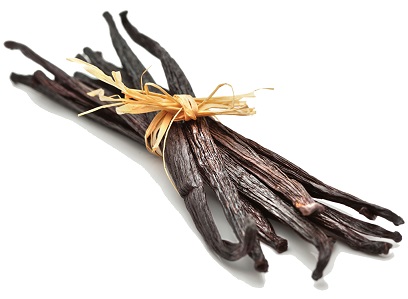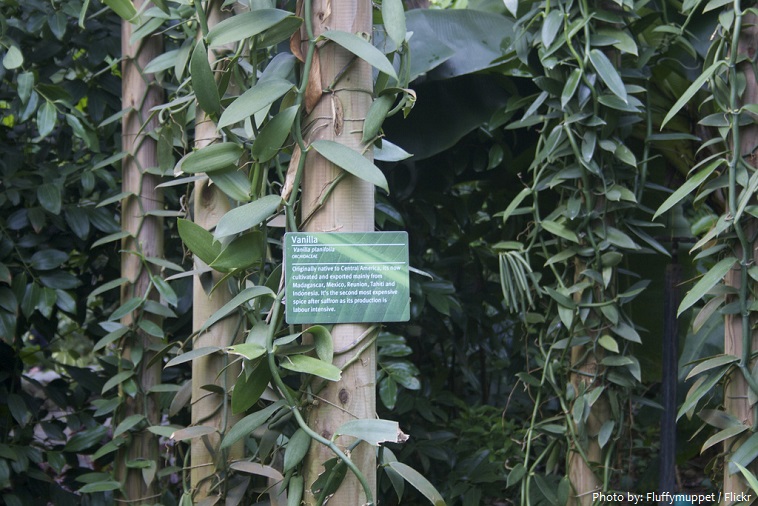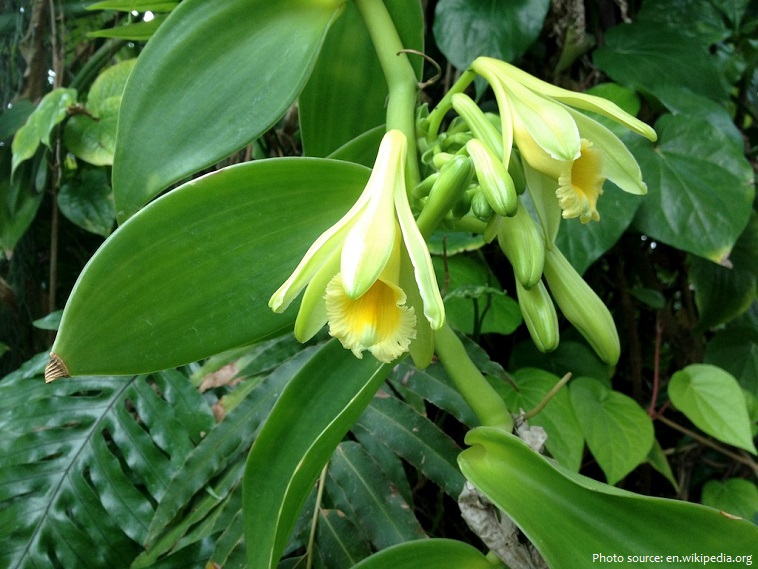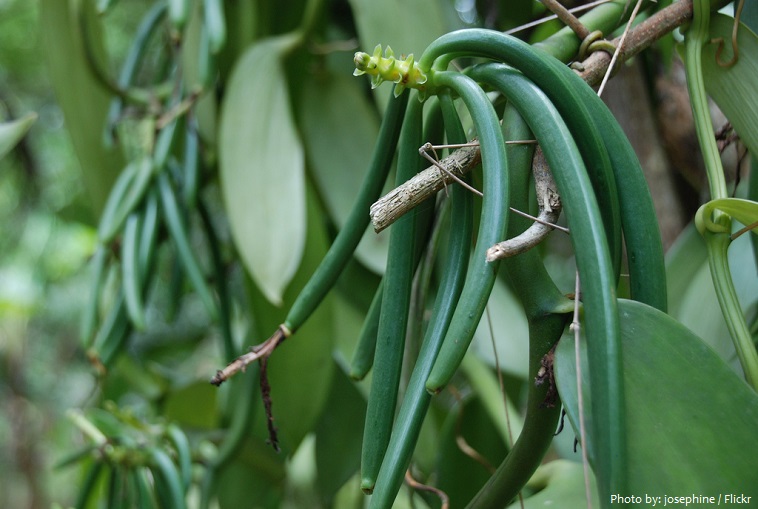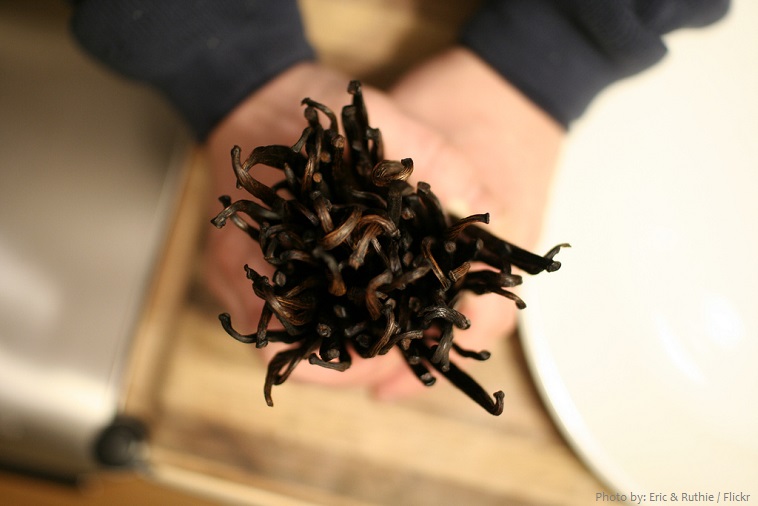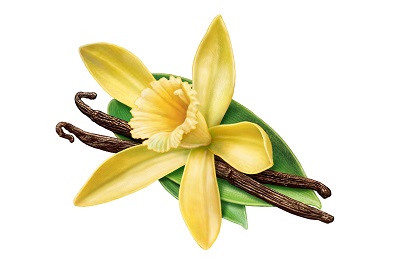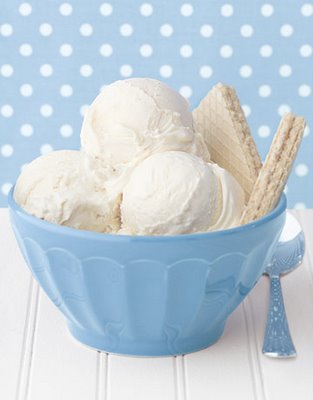Vanilla is a flavoring derived from orchids of the genus Vanilla, primarily from the Mexican species, flat-leaved vanilla (V. planifolia).
According to popular belief, the Totonac people, who inhabit the east coast of Mexico, were the first to cultivate vanilla. After their defeat by the Aztecs, they were forced to relinquish control of the exotic fruit.
The Aztecs named the fruit tlilxochitl, or “black flower”, after the matured fruit, which shrivels and turns black shortly after it is picked.
Spanish conquistador Hernán Cortés is credited with introducing both vanilla and chocolate to Europe in the 1520s.
Thomas Jefferson is credited with introducing vanilla to the United States in the late 1700s. While serving as Ambassador to France, he learned the use of vanilla beans, and when he returned to the United States, brought vanilla beans with him.
Today, vanilla beans are grown in several distinct regions of the world. This produces vanilla beans with unique regional characteristics and attributes, each particularly suited to different uses.
The main species harvested for vanilla is V. planifolia. Although it is native to Mexico, it is now widely grown throughout the tropics. Indonesia and Madagascar are the world’s largest producers.
Vanilla grows as a vine, climbing up an existing tree (also called a tutor), pole, or other support. It can be grown in a wood (on trees), in a plantation (on trees or poles), or in a “shader”, in increasing orders of productivity.
Numerous flowers open a few at a time and last a single day during the blooming season, which lasts about two months. Because of their dainty structure, the blossoms can be naturally pollinated only by certain small bees and hummingbirds; in areas outside of the pollinators’ range, the flowers are pollinated artificially with a wooden needle as soon as they open. The flowers vary in color from pale green to yellow to creamy white.
The fruit, a long capsule, reaches its full length of about 20 cm (8 inches) in four to six weeks but may take up to nine months to mature. As soon as they turn golden green at the base, the unripe pods are harvested.
Interestingly, fresh vanilla beans have no taste or aroma. They must undergo an extensive curing process that results in the release of vanillin with its distinct aroma and flavor. The traditional method begins with subjecting the harvested beans to a process of nightly sweating and daily exposure to the sun for about 10 days, until they become deep chocolate brown in color.
This processing and the need for manual pollination make vanilla one of the most expensive spices. Vanilla is the second-most expensive spice after saffron because growing the vanilla seed pods is labor-intensive.
Despite the expense, vanilla is highly valued for its flavor and is regarded as the world’s most popular aroma and flavor, vanilla is a widely used aroma and flavor compound for foods, beverages as indicated by its popularity as an ice cream flavor.
Vanilla flavoring in food may be achieved by adding vanilla extract or by cooking vanilla pods in the liquid preparation.
Although vanilla is a prized flavoring agent on its own, it is also used to enhance the flavor of other substances, to which its own flavor is often complementary, such as chocolate, custard, caramel, coffee, and others.
The most common flavor of ice cream is vanilla, and thus, most people consider it to be the “default” flavor.
The smell of vanilla is known to directly impact the brain and induce calmness.
Natural vanilla extract contains numerous antioxidants, including vanillic acid and vanillin. Antioxidants protect your body from damage from harmful components, such as free radicals and toxins.
Some research has pointed to vanilla as a weight loss aid, due to its appetite-suppressing properties.
Vanilla is also used in perfume manufacture, aromatherapy and hygiene and beauty products because of its many effects on the hair and skin.
The majority of the world’s vanilla is the V. planifolia species, more commonly known as Bourbon vanilla or Madagascar vanilla.
The word “vanilla”, derived from vainilla, the diminutive of the Spanish word vaina (vaina itself meaning sheath or pod), is translated simply as “little pod.”
The term French vanilla is not a type of vanilla, but is often used to designate preparations that have a strong vanilla aroma, and contain vanilla grains.
By analogy, the term “vanilla” is sometimes used as a synonym for “plain.”

